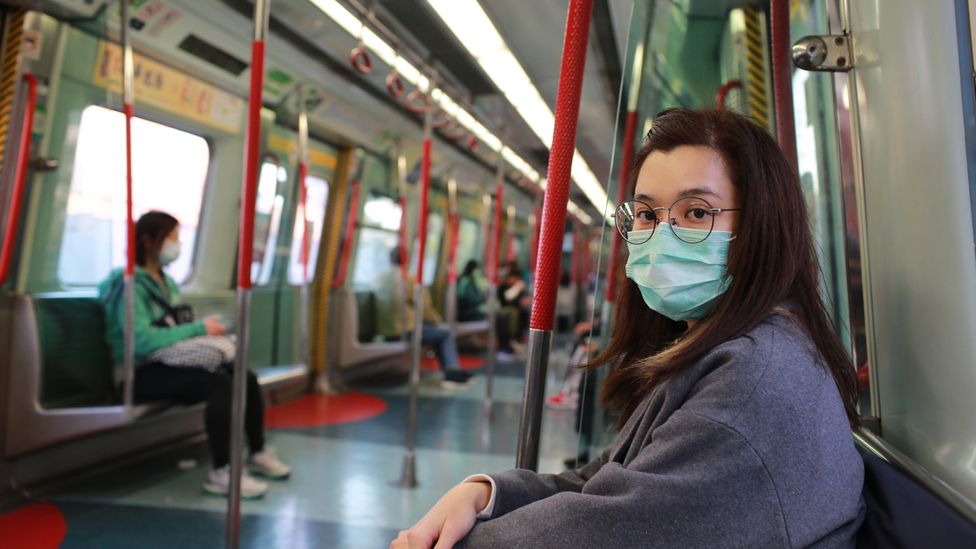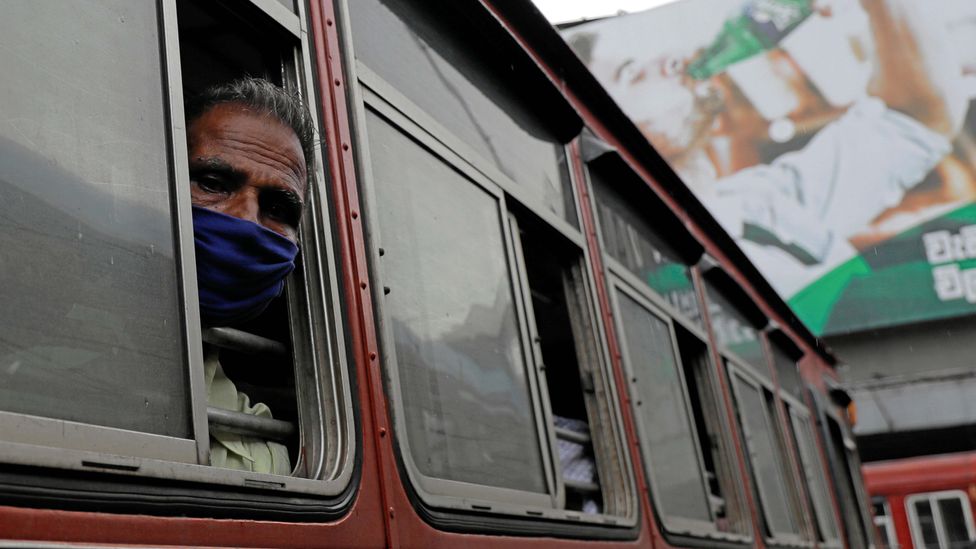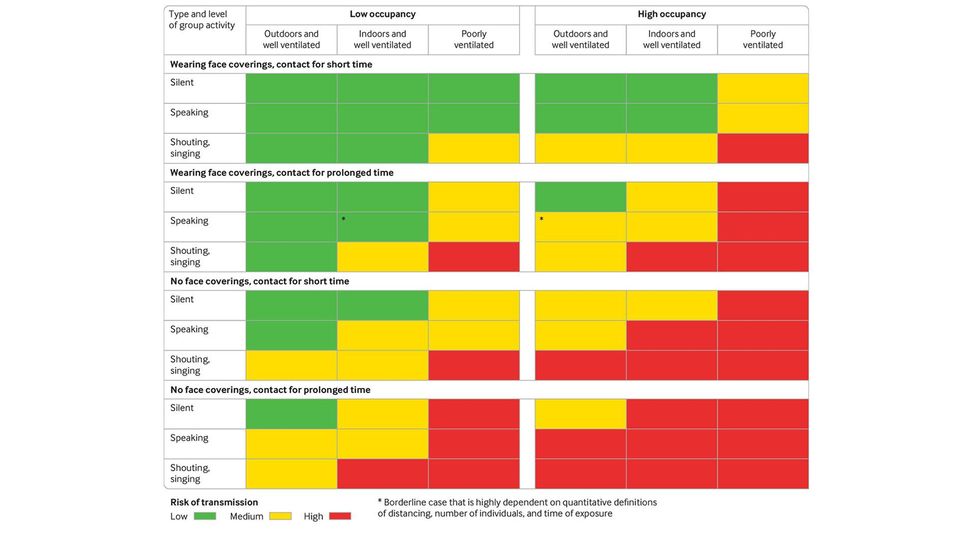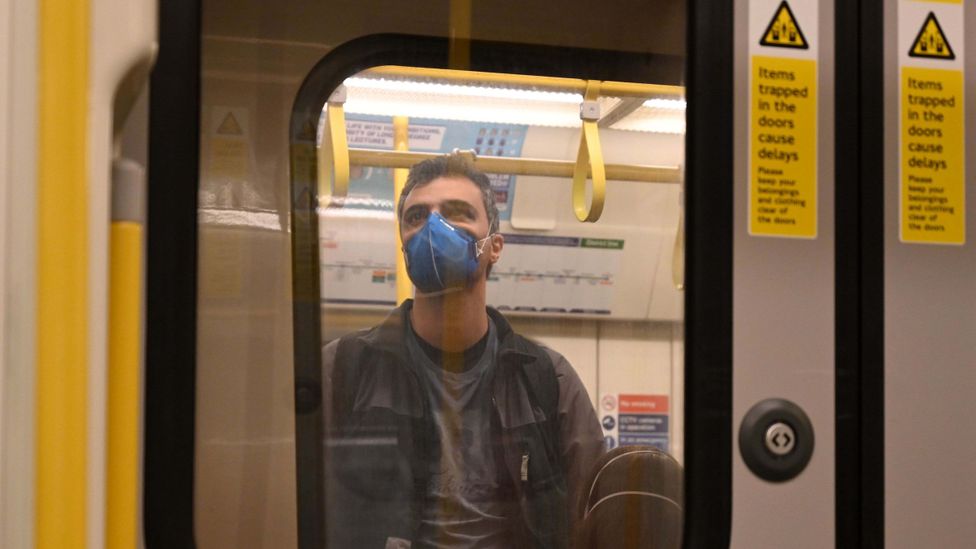Covid-19: How to travel safely on the bus, train and underpass
(Image credit:
Getty Images
)

Apart from the obvious precautions, what posterior you do to reduce your risk of catching or spreading the coronavirus on public conveyance?
O
On the London Subway system, the smartest commuters lie with hidden tricks to get from A to B. In the walking tunnels between station platforms, for example, non-signposted routes lav offer shortcuts. And if you pick predestinate carriages, they'll deposit you precisely by the platform exit at your destination so you can zero in the lead of the crowds.
Navigating public transport during the pandemic, however, is something that flush the most experienced commuter has never faced in front. Getting around quickly directly feels much less grand than acquiring roughly safely.
During the pandemic, public channelise usage has plummeted. In London, buses in late Revered were running with fitting o'er half the number of travellers typical for this time of year, and the Tube carried lonesome a third. But as lockdowns lift and offices reopen for many nations, many commuters are tentatively reverting to trains, buses and subways.
You may also ilk:
- Are face-shields effective?
- The benefits of a 20-second handwash
- 'What I learnt in Oxford's vaccine visitation'
So, how might a savvy passenger reduce their lay on the line? On that point are of course essential things you should do – wear a mask, avoid rush hours if you can, and take after physical distancing guidance in stations and onboard. Next local open health advice is the most measurable thing, and wish reduce your risk significantly. (Read more about how a front mask can help ascendence Covid-19.)
But on that point are also less obvious measures that are Charles Frederick Worth knowing. Insights from transport research and rider psychology can provide clues – Eastern Samoa well as pointing to changes in how we volition get around in the months ahead.
Ventilation and airflow matters
With a respiratory disease ilk Covid-19, the more people breathing, cough and talking into the comparable air as you in a confined distance, the Thomas More chance on that point is of being infected by the virus.
If you can cycle, walk or cod a scooter outside to get to work, that's your best option As in that respect is to a greater extent space to hold your space from others.
Cars are plainly personally safer too, provided you stick to travelling with those in your own household. But if everyone drives it volition lead to a "calamity of the commons" effect of more traffic, and greater environmental cost, so it's difficult to recommend as a socially responsible selection. "Cars are very inefficient in using the urban substructure. If we all move in a car, nobody moves," says Carlo Ratti, director of the Senseable City Lab at MIT in Cambridge, Massachusetts.

The more ventilation there is in your chosen physical body of transport, the better (Credit: Reuters)
If travelling by prepare, bus and underpass, one factor to take when plotting your itinerary is how fit your method of transport is ventilated, according to Goug Tyler, a channel research worker at University College London, World Health Organization has modelled the way that the computer virus propagates through buses. "Outside, in the give air, droplets are dissipated in the aviation and the thread," he explains. "Once we're inside, you convey more little movement."
Designs differ, only the more windows the better. For this reason, a unplumbed subway is much difficult to ventilate than a train surgery autobus at the turn up. According to a 2022 study by Lara Gosce at University College London, people who used the British capital underground regularly were more likely to stick out flu-like symptoms than those that didn't.
In the main, public transport ventilation systems are less effective than those on aeroplanes. The aura in planes is recirculated through sophisticated HEPA (High Efficiency Particulate Air) filters every some minutes, which should screen well-nig viral particles. "Aircraft ventilating system gets a very bad press in many slipway. IT's actually one of the best systems you can notic," says Tyler. And unlike many trains and buses, the air flow travels directly from the ceiling to the floor. This means that droplets will be pushed to the ground, away from custody and faces, more quickly.
A Newly House of York metro car, by counterpoint, pushes air horizontally, and uses filters with a lower functioning than planes, rated seven out of a scale of 20 in terms of screening efficiency. (You can dive deeper into the technical glasses of filters in that interactive guide to the ventilating system on the NYC subway, which likewise shows the path of micro-organism particles through the carriage.)
Quiet is golden
When assessing your chosen form of ecstasy, it is worth considering how much talk goes on interior – you bet loudly.
Whining environments, where citizenry must lean in and shout to be heard, are higher risk than quieter spaces. It's thought to constitute one of the reasons wherefore nightclubs, parallel bars or meat-packing plants have experienced treble levels of contagion.
And then, a cacophonous train equipage with singing sports fans would therefore pose more risk than a motorbus of silent commuters reading their phones.
This plot, recently published by researchers in the BMJ, captures these relative risks:

The risk of viral transmission varies depending on setting, military control times, venting, and conversation levels (Credit: BMJ/Saint Nicholas Jones et al/doi.org/10.1136/bmj.m3223)
Where to choose a butt
It's an often-quoted piece of New Yorker wisdom: "never get on an empty subway railcar". The deduction is that you don't want to find why everyone has shunned that carriage – at best, a bad smell; at pip, you might pay off assaulted.
That advice will lul defend for many – if you are a woman traveling at night, for example – just in the general, avoiding crowds of fellow travellers is heady if you can.
In addition to supportive masks, many tape transport authorities have introduced signs and stickers that remind people to physically distance with their backside choice, but are there any other things to know nearly which seating to choose or debar?
A Recent Chinese study looked at how seats proximity affected transmission risk happening trains. By tracing the journeys and seating of more 2,000 people carrying the virus on China's high-speed gearing network between December 2022 and Marching music 2022, they were able to see how the virus had moved between people.
Sitting in the same row, especially adjacent, carried the highest peril therein particular setting. It seems that the backrests between rows on the train type they looked at – a fast Chinese intercity train – may have provided something of a barrier. People sitting on the same row on an intercity journey may too have necessary to notch each other at close quarters to see the toilet or refreshments. (Importantly, though, the researchers couldn't rein out that transmission happening rows was higher because people nonmoving near are more likely to be family and friends, already in snuggled contact.)
Longer journeys, perhaps unsurprisingly, increased the risk, even for those sitting a few rows away. Later on two hours, a distance of fewer than 2.5m, without a mask, was insufficient to prevent contagion, the researchers found. Somewhat reassuringly though, using the same hind end previously held away a coronavirus carrier did not significantly increase risk of catching the virus.
Where to suffer
A study on metro passenger behavior in NYC suggests that people permanent are more likely to wait on to vertical poles than other handholds, such as straps and ball-and-spring devices. Perhaps valuable knowing if you want to avoid touching the most handled surfaces. Although the virus is thought to in the main be transmitted through the fine spray of aerosols and droplets we produce when we talk, breathe and cough up, information technology can too be propagate when we sense of touch surfaces that have become contaminated with the virus so put our fingers near our mouth or nose.
The researchers behind the subway learn also found that Unexampled Yorkers deciding to stand were more likely to linger closer to the doors than elsewhere in the carriage, because of law of proximity to the exit, partitions to lean against, and the opportunity to avoid eyeball contact with seated passengers. So, lingering by the doors may have mixed benefits – IT may be the among the best louvered spaces, but also the busiest.

According to single study, hands are more likely to stand than women (Cite: Getty Images)
Intriguingly, hands were more likely to stand than women as carriages get busier. Perhaps it's hand-me-down-fashioned social courtesy, or maybe men simply prefer being on their feet. Nevertheless if you deliberate the studies exhibit that men wash their workforce less often than women, you may conclude it's better not to share a pole with a man World Health Organization is more than likely to have marked-up palms. (Read more about the proportional risks of communicable the coronavirus from touching surfaces.)
Unknowns in the lead
Spell travelling regularly on overt transport will involve a change in risk for individuals, at the moment information technology's not clear exactly how much. There is some causal agency for optimism as Christina Goldbaum recently reported for the New York Times: contract-tracing in Japan, France and Austria found no links between outbreaks and public transport networks.
Some nonverbal models also hint that well-ventilated public deligh with green mask use is less risky than some other indoor environments such as a busy, stuffy bar. IT's come-at-able that short transit multiplication, ventilating system and the lack of talking among someone commuters (meaning fewer droplets) all help. But more evidence is requisite.
What's clear is that returning to pre-pandemic ways simply won't study, at to the lowest degree for the predictable future. Buses in London, e.g., have been capped at 30% carrying capacity, so if every bus rider returned to their office now, you'd need 2-3 times more buses running play in rush hr to maintain social distancing, or people would face delays. And even when they arrived, a skyscraper doer might have to wait in a long line for the socially-distanced elevator, says Tyler.
Perhaps we should see this As an opportunity to rethink travel. "During multiplication of change it is central to allow for experimentation in cities," says Ratti. "That ability to examination something, run into if it plant and transform the city is something that we should uphold in the berth-Covid-19 world."
So, while there are short-term ways to reduce your jeopardy on public ecstasy, a bigger oppugn to ask out ourselves is whether IT's fourth dimension to reassess how and when we get on from A to B. What will city commuting expect like after a year or two of focalisation on safety, non capacity or speed up? It's unnamed, simply for now, every last we can make as travellers arsenic hang on to something firm, and hope we arrive at a better destination.
--
As an award-winning scientific discipline site, BBC Future is committed to bringing you bear witness-based psychoanalysis and myth-busting stories just about the new coronavirus. You lavatory read more of our Covid-19 coverage here .
Link up i million Future fans by liking us on Facebook , surgery follow us on Chitter or Instagram .
If you liked this story, sign up for the weekly bbc.com features newsletter , called "The Essential Number". A handpicked selection of stories from BBC Future , Culture , Worklife , and Go out , delivered to your inbox every Friday.
How Close Can You Put Two Ceiling Fans Apart
Source: https://www.bbc.com/future/article/20200904-covid-19-how-to-travel-safely-on-the-bus-train-and-subway